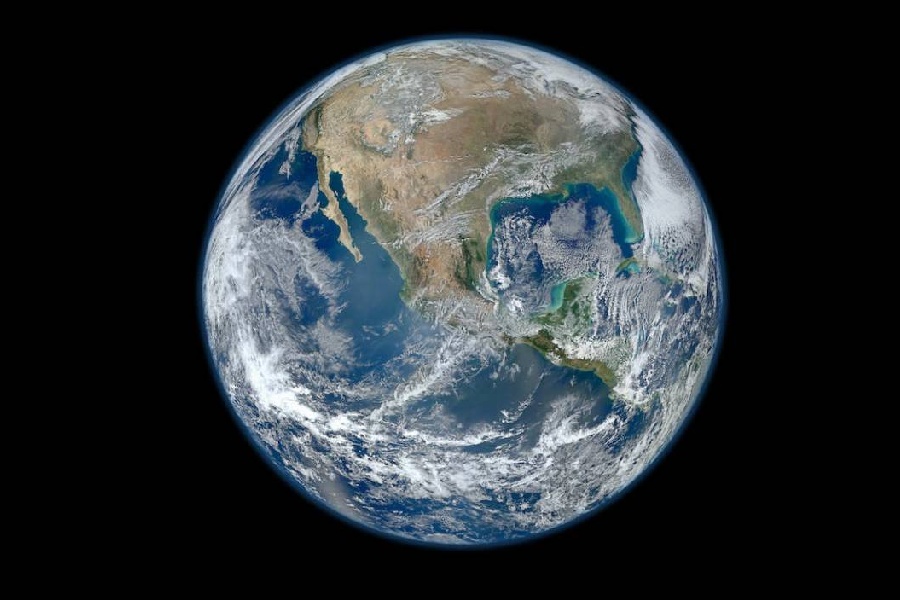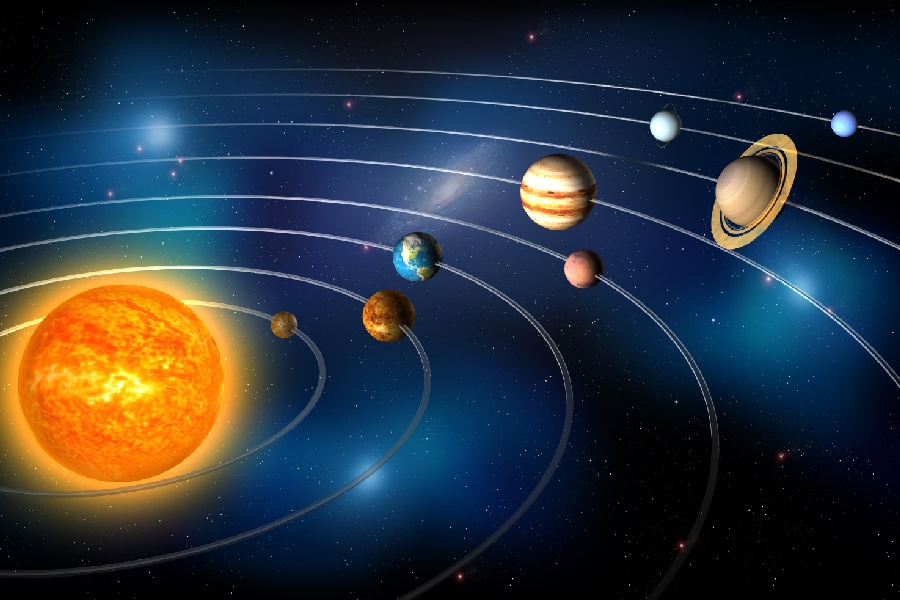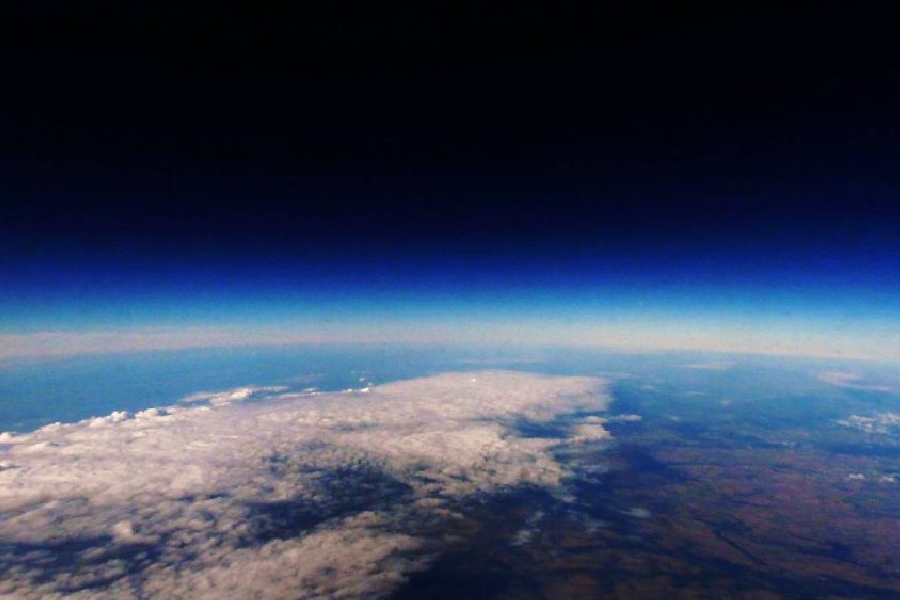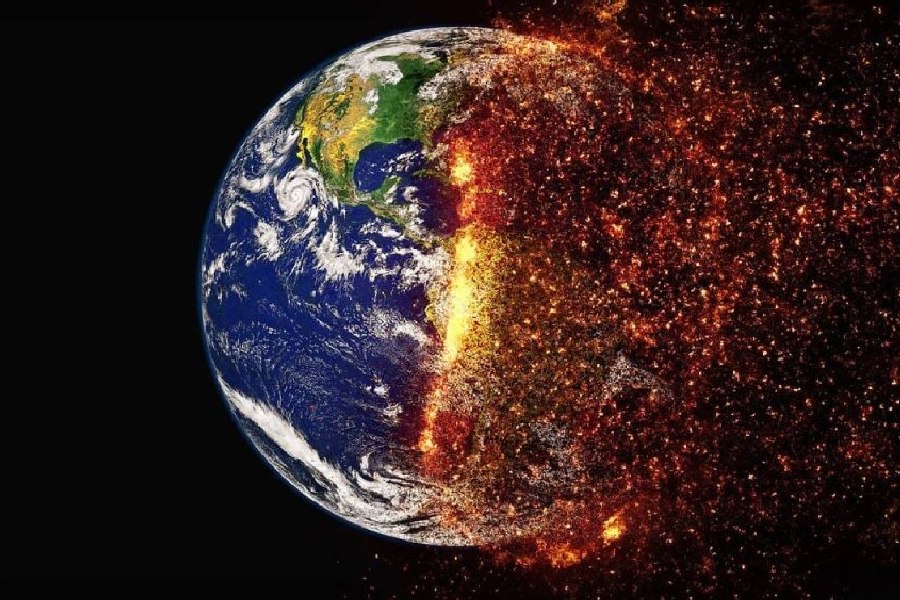The Earth, our home in the vast cosmos, is a planet of remarkable diversity and complexity. For countless ages, it has been a subject of fascination, scientific inquiry, and philosophical contemplation. In our quest to understand the cosmos, we often begin with a fundamental question — what is the Earth?
This article embarks on a journey of discovery, delving into the intricacies of our planet. We will unravel the Earth’s composition, explore its unique characteristics, and peer into its geological history.
Join us in an enlightening exploration of Earth’s unique wonders. Discover its extraordinary features, ecosystems, and the mysteries that make it an exceptional home for life.

What Is the Earth?
Earth is a terrestrial planet that is the third closest to our Sun. With an atmosphere abundant in oxygen and nitrogen, Earth provides the essential conditions for a multitude of life forms to thrive.
From towering mountains to vast plains and expansive oceans, its diverse landscapes offer a wide range of habitats for countless organisms.
Yet, Earth is not merely an astronomical marvel; it’s a world teeming with wonder and diversity, hosting a myriad of flora and fauna. Beyond its role as a cradle of life, Earth also plays a crucial part in the intricate dance of our solar system.
Its gravitational influence shapes the orbits of neighboring planets, while its protective magnetic field shields us from the perils of solar winds and cosmic radiation.
In essence, Earth serves as the stable anchor that maintains the equilibrium of our celestial neighborhood. Now, let’s explore the fundamental composition of Earth and uncover the extraordinary story it holds.
The Earth’s Layers Composition
The Earth’s structure is divided into layers, each with its own unique composition and characteristics:
Crust
The outermost layer of the Earth is known as the crust, and it includes both continental and oceanic crust. The continental crust is thicker and less dense than the oceanic crust, and it forms the solid land masses we see as continents.
The rocks in the crust are primarily granite, basalt, and various sedimentary rocks, containing elements such as silicon, oxygen, aluminum, and iron.
Mantle
Below the crust lies the mantle, a semi-solid layer composed of hot, flowing rock. It extends to a depth of about 1,800 miles (2,900 kilometers) and plays a vital role in distributing heat within the Earth.
The mantle’s rocks are rich in iron and magnesium, containing minerals like olivine and pyroxene. The high pressure in the mantle allows these rocks to exhibit semi-solid, ductile behavior, contributing to geological processes like plate tectonics.
Outer core
Deeper beneath the Earth’s surface, at depths ranging from about 1,800 to 3,000 miles (2,900 to 4,800 kilometers), is the outer core. This layer is primarily composed of liquid iron and nickel due to the high temperatures and pressures found there.
The convective flow of liquid iron generates electrical currents, which, in turn, create the Earth’s magnetic field through a geodynamo process. This magnetic field serves as a protective shield against harmful solar radiation.
Inner core
The innermost layer, extending from about 3,000 miles (4,800 kilometers) to the Earth’s center at roughly 4,000 miles (6,400 kilometers), is the inner core.
Here, despite the extreme heat, intense pressure causes iron and nickel to remain solid. The composition of the inner core is similar to that of the outer core, consisting of solid iron and nickel.
So, these distinct layers and their compositions contribute to the Earth’s structure and behavior, playing essential roles in geological processes and the planet’s overall functioning.
Our Earth’s Characteristics
- Surface — Earth boasts a diverse and ever-changing surface. It is composed of continents, oceans, mountains, valleys, deserts, and more. These surface features result from a complex interplay of geological processes, including erosion, volcanic activity, and plate tectonics.
- Tectonic plates — The Earth’s lithosphere, or the rigid outer layer, is divided into tectonic plates. These plates float on the semi-fluid asthenosphere beneath them. The movement of these plates drives processes like the formation of mountains, earthquakes, and the opening and closing of ocean basins.
- Internal structure — Earth’s internal structure is organized into distinct layers. These layers include the crust, mantle, outer core, and inner core. Each layer has unique properties, such as varying temperatures and states of matter.
- Chemical composition — Earth is primarily composed of silicate materials, such as rocks and minerals. Silicon and oxygen are the most abundant elements in the Earth’s crust, followed by aluminum, iron, calcium, sodium, and potassium. The composition varies slightly in different regions of the planet.
- Internal heat — Earth retains heat from its formation, with the highest temperatures found in the innermost core. This heat, combined with heat generated by the radioactive decay of elements within the mantle, drives geological processes like mantle convection and plate tectonics.
- Axial tilt and seasons — Earth’s axial tilt, at approximately 23.5 degrees, is responsible for the changing seasons. As the Earth orbits the Sun, this tilt causes variations in the angle and duration of sunlight received at different latitudes throughout the year.
Atmosphere on Earth
Earth’s atmosphere is a vital component that makes our planet habitable. Composed primarily of nitrogen (about 78%) and oxygen (about 21%), with trace amounts of other gases like carbon dioxide and argon, it provides the air we breathe.
The atmosphere also plays a crucial role in regulating temperature by trapping some of the Sun’s heat through the greenhouse effect. This moderates extreme temperature fluctuations, making Earth suitable for a wide variety of life forms.
Geological Features
Earth boasts diverse geological features that have formed over billions of years. These include towering mountain ranges like the Himalayas and the Andes, expansive plains, deep ocean trenches like the Mariana Trench, vast deserts like the Sahara, and intricate cave systems.
Volcanoes, formed by the release of molten rock (magma) from the Earth’s interior, have given rise to unique landforms and volcanic islands.
Water and Oceans
Water is a defining feature of Earth, covering approximately 71% of its surface. Oceans, such as the Pacific, Atlantic, and Indian Oceans, dominate much of the planet. These vast bodies of water host diverse marine life, influence climate patterns and regulate temperature.
Earth’s water cycle, driven by evaporation, condensation, and precipitation, is essential for sustaining life and shaping the landscape through processes like erosion and sedimentation.
How Did Earth Form?
Earth’s formation is thought to have begun about 4.6 billion years ago within a vast cloud of dust and gas in the early solar system. As particles and materials came together due to gravity, they formed the Sun at the center.
In the surrounding disk of material, called the solar nebula, small particles clumped together, eventually growing into the planets. Earth emerged from this cosmic process as a molten mass that gradually cooled over millions of years.
How Big Is Earth?
Earth is approximately 7,918 miles (12,742 kilometers) in diameter, making it the fifth-largest planet in the solar system. Its equatorial circumference is roughly 24,901 miles (40,075 kilometers), and it has a total surface area of about 196.9 million square miles (510.1 million square kilometers).
Earth’s size and mass play a crucial role in its gravitational pull, which keeps objects and the atmosphere anchored to the planet.

Earth’s Position in the Solar System
Earth is the third planet from the Sun in our solar system. It is located in the inner part of the solar system, often referred to as the “Goldilocks zone” or the “habitable zone”. This is because it is situated at a distance from the Sun allowing for the existence of liquid water, a crucial ingredient for life as we know it.
Orbit and rotation
Earth has two primary motions — rotation and revolution.
- Rotation — Earth rotates on its axis, an imaginary line that runs from the North Pole to the South Pole. This rotation gives us day and night, with one full rotation taking approximately 24 hours, which is why we have 24-hour days.
- Revolution — Earth also revolves around the Sun in an elliptical orbit. It takes approximately 365.25 days to complete one orbit, which is why we have a year. The slight fraction of a day is compensated for by adding an extra day to our calendar every four years, creating a leap year.
Distance from the Sun
Earth is about 93 million miles (150 million kilometers) away from the Sun. This distance is known as an astronomical unit (AU) and is used as a standard unit of measurement in astronomy.
Earth’s position at this distance is ideal for maintaining the right temperature range for life to thrive. If it were closer to the Sun, it would be too hot, and if it were farther away, it would be too cold.
Moon and tides
The Moon is Earth’s natural satellite and its gravitational pull significantly affects our planet. This gravitational interaction between the Earth and the Moon causes tides. Tides are the rise and fall of sea levels due to the Moon’s gravitational pull.
There are two primary types of tides:
- High tide — High tide occurs when the gravitational pull of the Moon on a particular region of the Earth is at its strongest. This causes the water in that region to bulge, creating a high tide.
- Low tide — Low tide happens when the Moon’s gravitational pull is weakest in a particular region, causing the water to recede and create a low tide.
Tides are not only influenced by the Moon but also by the Sun’s gravitational pull. When the Sun, Moon, and Earth are aligned during a full or new moon, we experience spring tides, which have higher high tides and lower low tides.
Conversely, during the quarter moons, when the Sun and Moon are at right angles to each other, we experience neap tides, which have less extreme tidal fluctuations.
Biodiversity and Life
Earth is teeming with life, thanks to its diverse ecosystems and unique environmental conditions.
Earth’s diverse ecosystems
- Terrestrial ecosystems — Land-based ecosystems range from lush rainforests to arid deserts, each hosting a variety of plant and animal species adapted to their specific habitats.
- Aquatic ecosystems — Oceans, rivers, lakes, and wetlands support a rich tapestry of marine life, from microscopic plankton to massive whales.
- Coral reefs — These vibrant underwater communities are home to countless species and play a vital role in marine biodiversity.
- Polar regions — Despite the extreme cold, polar ecosystems sustain life, including polar bears, penguins, and unique adaptations.
Impact of Earth’s conditions on life
- Atmosphere and climate — Earth’s atmosphere contains essential gases like oxygen and nitrogen, providing the necessary conditions for respiration and photosynthesis. Climate zones, from the equator to the poles, shape the distribution of life.
- Tectonic activity — Plate tectonics create diverse landscapes, influence ocean currents, and impact habitats and species distribution.
- Water and oceans — Oceans cover about 70% of Earth’s surface and support a staggering variety of life forms. Ocean currents, temperature, and salinity are critical factors influencing marine ecosystems.
- Biosphere — The interconnected web of life on Earth, from microorganisms to apex predators, plays a crucial role in maintaining the planet’s ecological balance.

Earth’s Role in the Solar System
Earth’s position and properties within the solar system contribute to its unique characteristics.
Gravitational influence and orbital dynamics
- Gravitational center — Earth’s gravitational pull influences the motion and orbits of other celestial bodies in the solar system, including the moon.
- Orbital dynamics — Earth’s orbit around the Sun, with its slight elliptical shape, determines the changing seasons and climate patterns on the planet.
Earth’s protective magnetic field
- Magnetic shield — Earth’s magnetic field, generated by the movement of molten iron in its outer core, acts as a protective shield. It deflects solar winds and cosmic radiation, preventing these harmful particles from stripping away the atmosphere and endangering life.
- Auroras — The interaction of charged particles from the Sun with Earth’s magnetic field creates stunning auroras, visible near the polar regions.
Earth’s unique conditions and its role in the solar system make it a haven for life. Its biodiversity and protective features are a testament to the delicate balance that sustains our planet’s ecosystems and makes Earth a truly remarkable place in the cosmos.
Impact of Human Activities on Earth
Human activities affecting Earth
- Deforestation — The widespread clearing of forests for agriculture, urbanization, and logging has led to habitat loss, reduced biodiversity, and disrupted the carbon and water cycles.
- Industrialization and pollution — The release of pollutants, including greenhouse gases, industrial chemicals, and plastics, has resulted in air and water pollution, leading to health problems and environmental degradation.
- Fossil fuel consumption — The burning of fossil fuels, such as coal, oil, and natural gas, for energy production, has been a major driver of climate change due to the release of carbon dioxide.
- Urbanization — The growth of cities and urban areas has increased the demand for resources, altered land use patterns, and contributed to the heat island effect, impacting local climates.
Environmental conservation and sustainability
- Conservation efforts — Conservation initiatives aim to protect ecosystems, endangered species, and biodiversity. These efforts include the establishment of protected areas, wildlife sanctuaries, and conservation programs.
- Renewable energy — Transitioning to renewable energy sources like solar, wind, and hydropower can reduce the reliance on fossil fuels and decrease greenhouse gas emissions.
- Sustainable agriculture — Sustainable farming practices, such as organic farming, crop rotation, and reduced pesticide use, promote soil health, reduce water pollution, and support long-term food security.
- Waste management — Proper waste disposal, recycling, and the reduction of single-use plastics can help minimize the environmental impact of human waste.
- Climate action — International agreements like the Paris Agreement aim to limit global warming by reducing greenhouse gas emissions, and mitigating climate change’s most severe effects.
- Environmental education — Raising awareness and educating people about the importance of sustainable practices and environmental stewardship can lead to more responsible individual and collective behaviors.

Frequently Asked Questions
What sets Earth apart from other planets in the solar system?
Earth stands out among the planets of the solar system in several ways:
- Abundance of liquid water — Earth is the only planet known to have large bodies of liquid water on its surface, a fundamental requirement for life as we know it.
- Rich atmosphere — Our planet’s atmosphere is predominantly composed of nitrogen and oxygen, creating a stable environment suitable for a wide range of life forms.
- Moderate climate — Earth’s distance from the Sun places it in the “Goldilocks zone” or habitable zone, where temperatures are just right for liquid water, another key ingredient for life.
- Diverse life — Earth’s biosphere teems with diverse life forms, from microscopic bacteria to complex animals and plants.
- Complex geology — The Earth has a dynamic and complex geological history, including tectonic plate movements, mountain ranges, and active volcanoes.
What makes our planet uniquely suitable to host life?
Earth’s suitability for hosting life results from a combination of factors:
- Atmospheric composition — The presence of oxygen in our atmosphere allows for respiration, a critical process for many life forms.
- Moderate climate — Earth’s position in the habitable zone provides a stable climate with temperatures that support liquid water, a universal solvent essential for life.
- Geological activity — Tectonic plate movements recycle elements and nutrients, fostering a dynamic environment for life to thrive.
- Abundance of water — Earth’s surface is adorned with oceans, rivers, and lakes, providing habitats for aquatic and terrestrial life.
- Biodiversity — The planet’s long history of evolution has led to the development of a diverse range of species that occupy various ecological niches.
Which planet is closest to Earth in terms of distance?
Venus is the planet closest to Earth in terms of distance. At its closest approach, Venus can come within approximately 24 million miles (38 million kilometers) of Earth.
However, it’s important to note that proximity in distance does not equate to similarity in conditions. Venus has a harsh environment with extreme temperatures and a thick, sulfuric acid-rich atmosphere, making it inhospitable to life as we know it.
Is Mercury the most similar planet to Earth in the solar system?
No, Mercury is not the most similar planet to Earth. While both Mercury and Earth are rocky, terrestrial planets, there are significant differences between them. Mercury is much smaller, lacks a substantial atmosphere, and experiences extreme temperature variations due to its lack of an atmosphere to trap heat.
Earth, on the other hand, has a diverse biosphere, a stable climate, and a protective atmosphere that makes it uniquely suitable for life. Venus, despite its harsh conditions, is often considered more similar to Earth in terms of size and composition.
Conclusion
Earth, the third planet from the Sun, occupies a unique place in our solar system. It’s distinguished by its remarkable features, making it the only known celestial body that sustains life.
This article has explored various aspects of Earth, including its composition, structure, atmosphere, geological features, and its vital role in the solar system. This has helped deepen our understanding of what is the Earth.
From the diverse ecosystems that thrive on its surface to the intricate interplay of geological forces and the protective magnetic field, Earth’s complexity and adaptability make it an ideal habitat for countless species, including humans. Its position in the solar system and gravitational influence contribute to its distinctive characteristics.
As we’ve delved into Earth’s intricacies, we’ve gained a deeper appreciation for our home planet, recognizing the importance of conservation and sustainable practices to safeguard its future.
